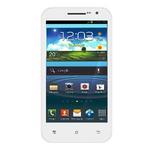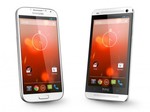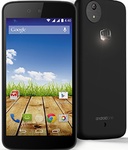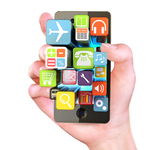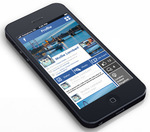Apple iPhone 12 Pro vs iPhone 11 Pro specs comparison - What’s changed - Android
Apple recently unveiled its latest iPhone 12 series. The lineup includes the new iPhone 12 Pro, flaunting a new design, bigger built, and now...
The post Apple iPhone 12 Pro vs iPhone 11 Pro specs comparison: What’s changed? appeared first on YugaTech | Philippines Tech News & Reviews.
Apple recently unveiled its latest iPhone 12 series. The lineup includes the new iPhone 12 Pro, flaunting a new design, bigger built, and now 5G-ready! What else do you think has changed apart from these? Are you coming from an iPhone 11 Pro and planning to upgrade to the latest iPhone 12 Pro? Let’s find out the advantages you can get with this specs comparison!

| iPhone 12 Pro | iPhone 11 Pro |
|---|---|
| 6.1-inch Super Retina XDR (2532 x 1170) OLED display, 460ppi | 5.8-inch Super Retina XDR (2436 x 1125) OLED display, 458ppi |
| HDR with Dolby Vision, HDR10, HLG, Wide color (P3) coverage, Haptic Touch, 1200 nits (HDR) | HDR with Dolby Vision, HDR10, HLG, Wide color (P3) coverage, Haptic Touch, 1200 nits (HDR) |
| Ceramic Shield (4x better drop performance) | Glass front and back |
| Apple A14 Bionic (5nm) | A13 Bionic chip |
| 128GB, 256GB, 512GB storage | 64GB, 256GB, 512GB storage |
| Pro camera system: | Triple-rear cameras: |
| • 12MP F1.6 main | • 12MP F1.8 main |
| • 12MP F2.4 ultrawide | • 12MP F2.4 ultrawide |
| • 12MP F2.0 telephoto | • 12MP F2.0 telephoto |
| LiDAR Scanner for Night mode portraits, faster autofocus in low light, and next-level AR experiences | - |
| 12MP F2.2 TrueDepth front camera | 12MP F2.2 TrueDepth front camera |
| OIS, 2x optical zoom in and out, 4x optical zoom range, 10x digital zoom, Brighter True Tone flash with Slow Sync, Smart HDR 3, Night Mode (front and rear cameras), Night mode portraits (rear camera), Deep Fusion (front and rear cameras), AppleProRAW, Night Mode Time-lapse, Dolby Vision HDR video recording up to 30fps, 4K video recording at 60fps, 1080p slo-mo video recording up to 120 fps (front camera) or 240 fps (rear cameras) | OIS, 2x optical zoom in and out, 4x optical zoom range, 10x digital zoom, Brighter True Tone flash with Slow Sync, Smart HDR 3, Night Mode (rear cameras), Deep Fusion (rear cameras), 4K video recording at 60fps, 1080p slo-mo video recording up to 120 fps (front camera) or 240 fps (rear cameras) |
| Up to 17 hours video playback | Up to 18 hours video playback |
| Dual-SIM (nano + eSIM) | Dual-SIM (nano + eSIM) |
| 5G (sub-6 GHz), 4G LTE | 4G LTE |
| Smart Data Mode (auto switches between 5G and LTE) | - |
| Wi?Fi 6 with MIMO | Wi?Fi 6 with MIMO |
| Bluetooth 5.0 | Bluetooth 5.0 |
| GPS, GLONASS, Galileo, QZSS, and BeiDou | GPS/GNSS |
| VoLTE | VoLTE |
| NFC | NFC |
| FaceID | FaceID |
| FaceTime HD (1080p) over 5G or Wi-Fi | - |
| Lightning port | Lightning port |
| Rated IP68 (maximum depth of 6 meters up to 30 minutes) under IEC standard 60529 | Rated IP68 (maximum depth of 4 meters up to 30 minutes) under IEC standard 60529 |
| Compatible with MagSafe accessories and wireless chargers, compatible with 20W adapter or higher | Compatible with 18W adapter and higher |
| iOS 14 | iOS 14 |
| 146.7 x 71.5 x 7.4mm | 144.0 x 71.4 x 8.1mm |
| 187g | 188g |
| Silver, Graphite, Gold, Pacific Blue | Midnight Green, Space Gray, Silver, Gold |
Summary of improvements in the iPhone 12 Pro:
• Bigger screen size
• Higher screen resolution
• Latest A14 Bionic chipset
• 5G connectivity
• LiDAR Scanner for Night mode portraits
• HDR video recording with Dolby Vision
• More camera features
• Compatibility with MagSafe wireless charging
The new iPhone 12 Pro comes bigger with its 6.1-inch screen but retains the same style as the notch display where the front camera, stereo speaker, and microphone are found. It is now equipped with Ceramic Shield with up to four times better drop performance while the former uses a standard scratch-resistant glass. Both screens are geared with Super Retina XDR OLED display with up to 1200nits. The iPhone 12 Pro, on the other hand, has a slightly higher display resolution at 2532 x 1170, but both support HDR content with Dolby Vision and HDR10.
However, for the body, the latest version flaunts a slightly slimmer built with 7.4mm, while the former has 8.1mm. Despite iPhone 12 Pro’s bigger body, both iPhones almost weigh the same with just a 1g difference.
Powering the iPhone 12 Pro is the latest A14 Bionic chip based on a 5-nanometer architecture paired with the next-generation Neural Engine. This provides a better battery efficiency and powers Dolby Vision recording. The iPhone 11 Pro, on the other hand, comes with the older A13 Bionic chip with a third-generation Neural Engine.
For connectivity, the iPhone 12 Pro now comes in 5G. It also has a Smart Data Mode that automatically switches internet connectivity between 5G and LTE. The iPhone 12 Pro can also benefit from the 1080p FaceTime HD video calls over cellular, thanks to the 5G connectivity. The iPhone 11 Pro, on the other hand, has 4G LTE. Both are equipped with WiFi 6 with MIMO, NFC, VoLTE, FaceID, and Bluetooth 5.0.
Other connectivity features packed in the latest Pro are GPS, GLONASS, Galileo, QZSS, and BeiDou, while the former has GPS/GNSS. Moreover, the two are geared with IP68-certified for water and dust resistance. It only differs in an increased maximum depth of 6 meters since the iPhone 11 Pro supports only 4 meters for 30 minutes.
Talking about the camera features, both iPhone 12 Pro and 11 Pro have the same triple-rear cameras with 12MP main, 12MP ultrawide, and 12MP telephoto. However, the iPhone 12 Pro delivers better photos even at night, as it now supports Night Mode portraits and Night Mode time-lapse. It also supports the new Apple ProRAW feature, Smart HDR 3 for photos, and HDR video recording with Dolby Vision up to 60 fps.
Both iPhones have the same 12MP F2.2 TrueDepth front camera, however, the iPhone 12 Pro gets HDR video recording with Dolby Vision up to 30 fps, Night Mode, and Deep Fusion.
Moreover, the new iPhone 12 Pro also leveled-up with a LiDAR scanner identified by Apple as the technology used for NASA Mars landing. The LiDAR makes night mode portraits possible, delivering faster autofocus in low light, and provides next-level AR experiences.
As for the storage, the iPhone 12 Pro starts at 128GB, while the iPhone 11 Pro starts at a lower 64GB.
The iPhone 12 Pro now supports two wireless charging technologies for another upgrade: MagSafe and Qi. It is also compatible with 20W adapters or higher, along with the option to purchase several MagSafe accessories, including a wireless charging-friendly and magnetic case with a wallet. However, the iPhone 11 Pro supports wireless charging and 18W wired fast charging. The charging adapter and wired EarPods for both smartphones will now be sold separately as part of Apple’s changes.
Battery-wise, the iPhone 12 Pro seems to have a lower battery life at 17 hours of video playback, compared to the iPhone 11 Pro’s 18 hours of video playback.
Should you upgrade?
If you belong to those who have waited for the 5G to come to iPhone, finally, this is it! More than that, there has also been a leap in the device protection as it is now equipped with Ceramic Shield. It also comes with a bigger screen, better performance, and supports faster wireless charging. The camera also levels up with the new LiDAR scanner that makes night mode portraits, and time-lapse possible, sporting additional camera features such as deep fusion and night mode for the front camera and HDR photo and video recording. Considering all these new upgrades, jumping to the new iPhone 12 Pro might be worth it if you really need the new camera features. Otherwise, you’re probably better off sticking to the 11 Pro for another year.
The price of the iPhone 12 series for the Philippines is yet to be announced, so stay tuned.
What do you guys think? Please share your thoughts with us in the comments below.
The post Apple iPhone 12 Pro vs iPhone 11 Pro specs comparison: What’s changed? appeared first on YugaTech | Philippines Tech News & Reviews.
18/10/2020 03:20 AM
Vivo TWS Neo Review
18/10/2020 03:49 AM
4 security tips to protect yourself from email phishing scams
18/10/2020 07:30 AM
Cherry Mobile holds Lazada flash sale from Oct 18 to 25
18/10/2020 06:15 AM
VMware to fast-track innovation and digital transformation in SEA
18/10/2020 07:54 AM
ASUS in-partnership with Iron Meets Wood announces Multi-Monitor Promo
18/10/2020 01:33 AM
Mobilarian/Symbianize is officially shutting down for good
18/10/2020 07:52 AM
- HEALTH
- Comics
- Libraries & Demo
- Sports Games
- Racing
- Photography
- Transportation
- Media & Video
- Sports
- Health & Fitness
- Weather
- Medical
- Cards & Casino
- Arcade & Action
- Personalization
- Social
- Communication
- Productivity
- Casual
- Shopping
- Tools
- Brain & Puzzle
- Business
- News & Magazines
- Finance
- Lifestyle
- Music & Audio
- Entertainment
- Travel & Local
- Books & Reference
- Education




